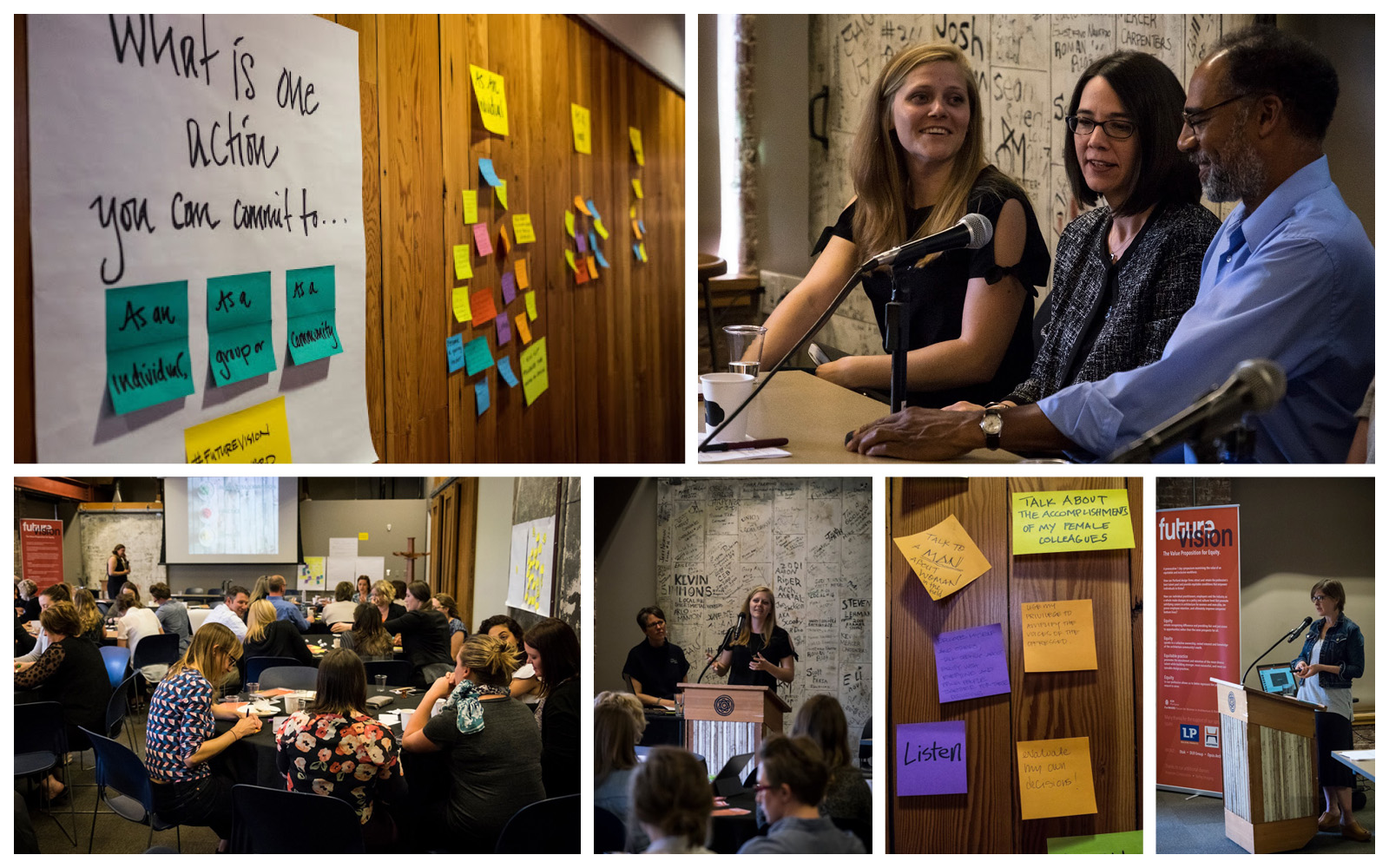


06.23.17
Bora Principal Amy Donohue and I recently attended this day-long symposium, hosted by AIA Portland and focused on what we, as architectural firms and individuals, can do to promote equity for women and minorities in our industry and workplaces.
Saskia Dennis-van Dijl presented the latest 2016 Equity by Design findings where she and her team have done some amazing work uncovering the nuanced connections within the survey responses. There was a strong correlation between having both females and males in leadership positions and employee’s perception of access to that leadership and overall employee happiness. In short, younger staff members at a firm with a diverse senior leadership team are more likely to turn to leadership for career advice and, as a result, be optimistic about their professional futures, energized by their work, and remain at their current job.
A key takeaway for employees? Don’t be afraid to ask. More often than not, there are others in your office that would benefit from the same amenity or flexibility that you need to be successful. And make sure to bring some facts or precedent for what you’d like to see done. Leadership is less likely to say no when they can see it worked at another firm.
Amy Donohue moderated a discussion with 3 Portland firms – Carlton Hart, Ankrom Moisan and Opsis – that are all in different places on the path to equity. Representatives from each shared stories about how they seek to promote inclusivity and diversity in different ways with varying degree of success. There has been a shift in our profession since the Great Recession, with concerted efforts to reach out to a more diverse employee pool, retaining and promoting women in the workforce, and establishing a better work/life balance within our offices.
Paid family leave policies and flexible office hours are becoming more commonplace at Portland firms, and we are making great strides in increasing the number of women who become licensed. But the numbers show that we still have a long way to go with recruiting and retaining people of color. Carleton Hart discussed how being a minority owned firm has helped them attract more diverse employees, but they still struggle the homogeneity of candidates, especially in Portland.
Presenter Hanna Richard-James asked us to all pair up with someone at our table and share a time when we had been subject to or had seen an example of implicit bias in the workplace or our personal lives. We were asked not to offer advice but just listen, and it served as a powerful reminder that our subconscious reactions to our coworkers and friends have a deep impact. Although we have come a long way in our profession towards encouraging, supporting, and promoting an equitable workforce, we must continue to speak loudly and advocate for diversity and equity within our firms and communities.
Photo Credit: AIA Portland